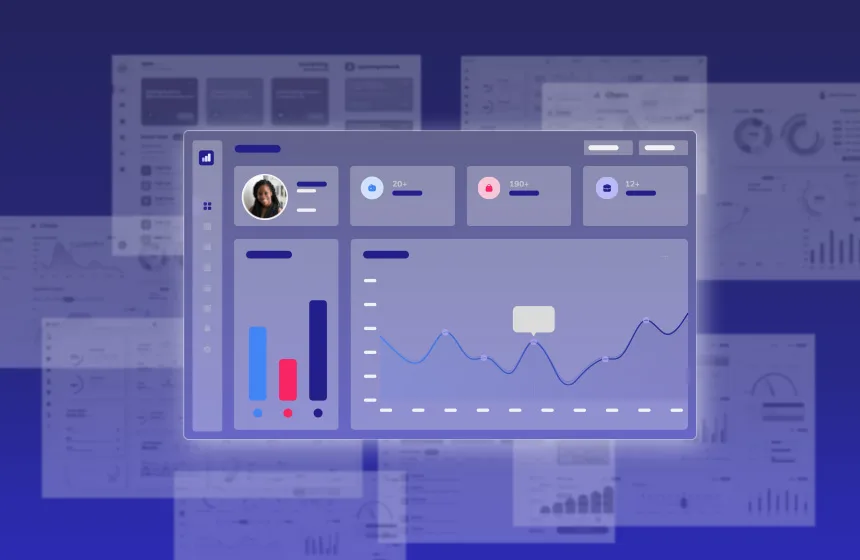Accelerate deals and increase win rates with the leading enterprise AI demo platform.
The Best Storylane Alternatives (And Why Teams Make the Switch)

November 14, 2025
Table of Contents
Storylane is often where teams start when they want to quickly spin up no-code product tours. It’s seen as simple and easy to use. And for straightforward walkthroughs, it gets the job done.
But for fast-moving sales and solutions teams that need deeper customization, more scalability, or true interactivity? Storylane often starts to show its limits.
In this blog, we’ll explore the most common reasons companies move off Storylane and we’ll walk through the best alternatives. If you’re in the market for a demo platform, you’ll want to keep reading.
Where Storylane Falls Short
Storylane works well for lightweight use cases, especially in early-stage and small companies. But as GTM orgs mature and demo needs rise, organizations often outgrow Storylane’s capabilities.
Here’s why that happens.
Limited Customization
As you scale demo creation, it’s critical to be able to tailor every step of the experience. Storylane offers some level of customization, but many teams find it rigid when trying to create vertical-specific demos, test different value props, or update visuals and flows.
This is especially limiting when Sales or Product Marketing needs control over demo narratives without requiring Engineering resources.
Difficulty Scaling
Storylane is built for simple product tours, not complex software and organizations. Teams trying to scale across regions, industries, or multiple product lines often hit a ceiling.
For example, cloning and updating demos at scale often requires manual work to configure, maintain, and customize. Storylane doesn’t offer much in the way of automation, especially when it comes to maintaining environments or generating demo data. That’s a real blocker when teams want to personalize at scale and are dealing with large data sets or multiple languages that need to be customized.
Friction Across Teams
Storylane is primarily a marketing tool. That means when Sales or SEs need to get involved — say, to prep for a live demo, replicate a demo environment, or send a tailored leave-behind — the workflows break down.
In other words, Sales and SE teams can’t use the same assets that the Marketing team does. They’re left having to rebuild (or build from scratch) demos that work for them.
And without native support for cloning live applications, many SEs feel like they’re back to manually spinning up test environments or maintaining fragile demo tenants.
Security and Reliability Requirements
Enterprise security requirements aren’t just for the enterprise. If your product contains sensitive data, or if you’re demoing to regulated industries, SOC 2 and ISO certifications aren’t nice-to-haves. They’re table stakes.
Storylane’s security posture limits its ability to support enterprise requirements, and its lack of control over demo performance and access management can cause issues in high-stakes selling environments.
The good news? There are powerful alternatives that pick up where Storylane leaves off.
Real-World Signs You’ve Outgrown Storylane
Storylane is great for small teams and when you’re getting started with demo software. But fast-moving GTM teams often find themselves bending over backward to make it work — or quietly abandoning it for critical demos. If any of these sound familiar, it might be time to move on:
- You’re customizing every demo by hand. Instead of scaling, your team is stitching together bespoke demos or duplicating efforts across teams and regions.
- Sales and SEs are rebuilding demos outside the platform. When reps skip your “official” demos for static screenshots or live environments, it’s a sign the current tools aren’t flexible or powerful enough.
- You’ve hit technical limitations. Maybe you need more interactivity, real data, or dynamic personalization and workarounds are starting to feel like hacks.
- Security or compliance teams are pushing back. Governance, data privacy, and sandbox isolation aren’t optional as you move upmarket.
- Marketing can’t personalize at scale. If every new segment or persona needs a manual refresh, your team can’t keep pace with campaigns.
The good news: if you’re experiencing these, you’re not alone, and there are demo platforms purpose-built for your next stage of growth.
Use Cases That Go Beyond What Storylane Can Do
Storylane helps you make click-through tours. But as demo strategies evolve, most teams need more than just highlights. They need interactive, data-rich, and dynamic experiences across the funnel, such as:
- Live SE demos that mirror the real product. Clone your app once and deliver reliable, no-risk live demos that reflect exactly what prospects want to see.
- Custom demos for every persona, vertical, or product line. Marketing can spin up tailored demos without dev help. No need to rebuild from scratch.
- Interactive leave-behinds for self-guided follow-up. Reps can send tailored demo links that prospects can revisit, explore, and share. They can see how their prospects interact with full engagement tracking.
- Internal demo environments for onboarding and training. New hires get a safe place to learn the product without touching production.
- Multi-team demo workspaces. Regional, product, and solutions teams can all work from the same platform, each with their own templates, permissions, and data sets.
These are the kinds of workflows where legacy, tour-based tools tend to hit a wall.
The 5 Best Storylane Alternatives
So what’s next?
If you’ve outgrown Storylane, you’re not alone. Below, we break down five of the top alternatives, including how each one fits different needs and where they shine.
Here’s how the top alternatives compare at a glance.
| Storylane Alternative | Best For | Key Features |
| Reprise | Scalable, personalized demos for Sales, Marketing, and Solutions Engineering | App cloning, AI data injection, guided tours, enterprise-grade security |
| Walnut | Marketing teams who want website product tours | CRM integrations, ease-of-use |
| Supademo | Lightweight demos for small teams | No-code capture, quick setup, basic analytics |
| Arcade | Product-led marketing content | Storytelling tools, easy embed, CMS integrations |
| Navattic | Inbound engagement and lead qualification | Interactive tours, lead capture, lightweight collaboration |
1. Reprise: Best overall for scalable, personalized demos
Reprise is purpose-built for enterprise teams that need reliable, customizable, and scalable demo environments. It’s the only platform that supports all three major demo methods — guided tours, live data injection, and full app cloning — with embedded AI to handle configuration, data population, and maintenance.
Key Features:
- AI-powered demo automation (automatically configure, populate, and maintain demo environments)
- Application cloning for interactive, safe demo environments
- Live app data injection, powered by AI
- Deep customization for sales and marketing use cases
- Enterprise-grade security (SOC 2 Type II, ISO 27001:2022)
- Extensive RBAC and access control
2. Walnut: Best for marketing integrations
Walnut is designed with product marketing in mind, especially for embedded website tours and integrations. It helps marketing teams build reliable walkthroughs to increase website conversions.
Key Features:
- Easy screen capture
- CRM integrations (Salesforce, HubSpot)
- Template-based demo customization
- User engagement analytics
3. Supademo: Best lightweight option for small teams
Supademo is simple, clean, and fast, making it a great fit for early-stage teams that need basic product tours without heavy configuration.
Key Features:
- No-code screen recording and demo creation
- Basic viewer analytics
- Easy embedding and link sharing
- Minimal ramp time
4. Arcade: Best for product-led marketing
Arcade focuses on turning product experiences into visual stories. It’s ideal for embedding interactive content in blogs, help centers, and PLG landing pages.
Key Features:
- Storyboard-based demo builder
- Embeds for CMS and websites
- View tracking and link sharing
- No-code customization
5. Navattic: Best for inbound conversion
Navattic is focused on top-of-funnel engagement. It works best for marketing teams that want to qualify leads by letting prospects explore the product before booking a call.
Key Features:
- Interactive product tours
- Lead capture integrations
- Simple collaboration and versioning
- Tour-level analytics
Choose a Demo Platform That Grows With You
Choosing a demo platform isn’t just about what works today. It’s about what will work six months, a year, or two years down the line. As your demo program grows and your product evolves, your tools need to keep up.
Reprise gives teams the flexibility to support multiple demo form factors like interactive product clones and guided tours, and manyuse cases — from early-stage leave-behinds to high-stakes, live enterprise walkthroughs — all with the automation and reliability that fast-moving GTM teams need.
Ready to see the difference? Try Reprise and explore what scalable, personalized demo creation really looks like.
FAQs
What features should I look for in a Storylane alternative?
Look for platforms that offer demo flexibility (guided, live, and cloned), customization, automation, and scalability. Enterprise features like security, role-based access, and performance control are also essential as your team grows.
What makes Reprise better suited for scaling demo operations?
Reprise supports AI-powered automation, application cloning, and real-time data injection so teams can create, customize, and update demos at scale. It’s built for SEs and Sales teams working in complex, high-stakes environments.
How easy is it to switch from Storylane to Reprise?
Very. Reprise’s team will guide you through the transition and help rebuild or enhance your existing demos with more powerful capabilities. Most teams can be fully onboarded and publishing demos within days.






